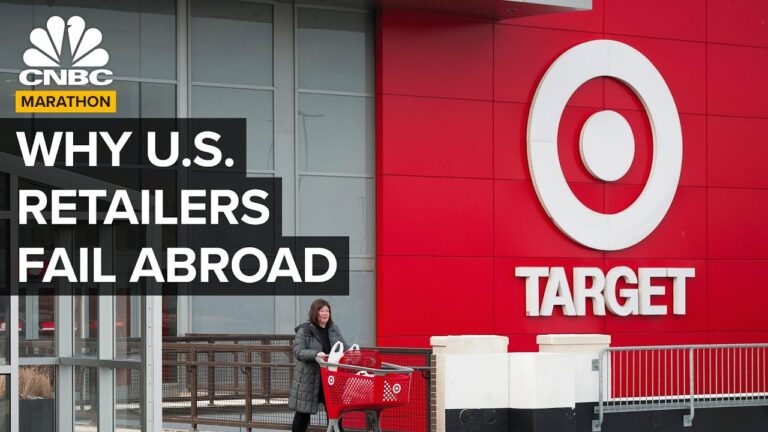Introduction
America has long been a global economic powerhouse, and its companies often attempt to expand their presence in international markets to tap into new revenue streams and extend their brand reach. However, when it comes to retailers like Target, fast-food giants like McDonald’s, and iconic brands like Harley-Davidson, their attempts to conquer foreign markets have met mixed success. I
n this article, we will explore why American retailers like Target fail abroad by taking examples from Target’s misadventure in Canada, McDonald’s struggles in Iceland, and Harley-Davidson’s challenges in India. Additionally, we will delve into other cases to better understand the overarching challenges that American companies face when trying to navigate foreign markets.
Target’s Foray into Canada
Target, the beloved American retail giant, embarked on a grand international expansion plan in 2013 by entering the Canadian market. The company’s entry into Canada was highly anticipated, but it soon turned into a debacle. There were several key reasons behind Target’s failure in Canada.
- Lack of Understanding: Target underestimated the Canadian market, assuming that it would be similar to the United States. The company failed to grasp the unique preferences and shopping habits of Canadian consumers, leading to issues with its product assortment and pricing strategies.
- Supply Chain Issues: Target also struggled with supply chain problems, which caused delays and issues in maintaining store shelves. This contributed to a poor shopping experience and disappointed customers.
- Aggressive Expansion: Target tried to expand too quickly, opening over 130 stores in a short span. This rapid expansion led to financial stress and operational challenges that the company could not overcome.
- Brand Perception: Canadian consumers had high expectations from Target, as it was perceived as a premium brand. When Target failed to deliver on these expectations, it eroded consumer trust.
Learn in the CNBC Video Why American Retailers like Target Fail Abroad
McDonald’s Fizzles in Iceland
McDonald’s, a global fast-food giant, is known for its adaptability in various markets, but it faced a significant setback in Iceland in 2009. Iceland’s McDonald’s adventure serves as an interesting case study in understanding why American fast-food chains can struggle abroad.
- Economic Factors: Iceland’s economic crash in 2008, one of the worst in history, played a pivotal role in McDonald’s exit. The currency devaluation and hyperinflation made importing ingredients and maintaining low prices impossible.
- Consumer Preferences: Icelandic consumers prefer local and organic food, which is in stark contrast to McDonald’s standardized menu. The lack of adaptability to local tastes undermined the brand’s appeal.
- High Operating Costs: The operational costs in Iceland are exorbitantly high, leading to expensive menu items. This further alienated cost-conscious consumers.
- Competition: Iceland has a vibrant local food scene, making it challenging for global fast-food chains to establish a strong foothold.
Harley-Davidson’s Challenges in India
Harley-Davidson, an iconic American motorcycle manufacturer, faced difficulties in the Indian market, highlighting how even established brands can encounter obstacles abroad.
- High Import Tariffs: India imposed substantial import tariffs on Harley-Davidson motorcycles, making them prohibitively expensive for most Indian consumers. This pricing challenge severely hampered the brand’s success in the country.
- Local Competition: The Indian motorcycle market is highly competitive, with numerous local manufacturers offering more affordable options. This posed a significant challenge to Harley-Davidson’s premium pricing strategy.
- Market Understanding: Harley-Davidson initially struggled to understand the Indian market and consumer preferences. Adapting to local tastes and preferences took time, and they faced competition from well-established local brands.
Other American Retailers and Brands Abroad
Target, McDonald’s, and Harley-Davidson are just a few examples of American companies that have faced difficulties expanding abroad. Several overarching challenges contribute to the struggles faced by these and other American retailers and brands:
- Cultural Differences: The cultural differences between the United States and other countries can be vast. Understanding local customs, traditions, and consumer behavior is crucial for success. Failure to do so can lead to misunderstandings and alienate potential customers.
- Regulatory Hurdles: Different countries have their own regulations and trade restrictions that American companies must navigate. These regulatory challenges can vary widely, impacting everything from import/export procedures to product labeling and safety standards.
- Economic Factors: Economic conditions can change rapidly, affecting a company’s profitability and cost structures. Exchange rate fluctuations, inflation, and economic crises can significantly impact the financial viability of a foreign venture.
- Competition: Local competitors may have a better understanding of the market, stronger consumer relationships, and more competitive pricing. Established local brands can pose a formidable challenge to foreign entrants.
- Adaptability and Localization: The ability to adapt products and services to local tastes and preferences is a crucial factor in international success. Companies that insist on one-size-fits-all approaches often struggle.
- Patience and Investment: International expansion requires significant investments and a long-term commitment. Companies that expect quick returns may find themselves disappointed.
Conclusion
The failures of American retailers like Target in Canada, McDonald’s in Iceland, and Harley-Davidson in India provide valuable insights into the challenges that American companies face when expanding abroad. Understanding cultural differences, navigating complex regulations, and adapting to local preferences are essential elements of success in international markets. Moreover, a deep commitment to investment and patience is required to build a presence in foreign markets. While these examples illustrate the difficulties, they also serve as valuable lessons for companies seeking to expand their global footprint. Successful global expansion requires a combination of thorough market research, adaptability, and a deep understanding of the local consumer landscape.


